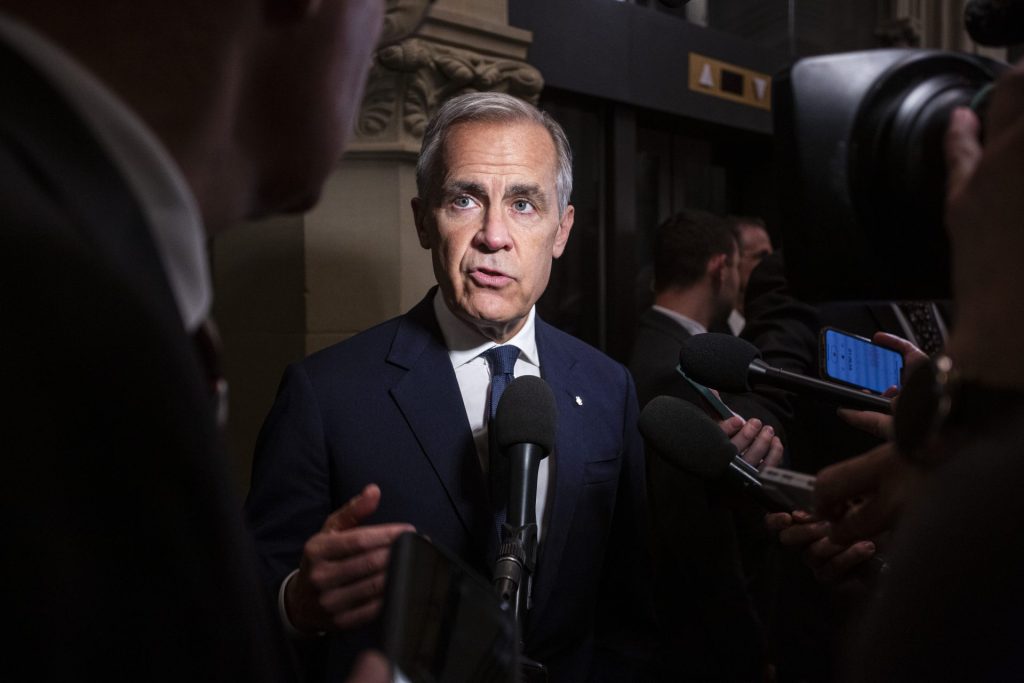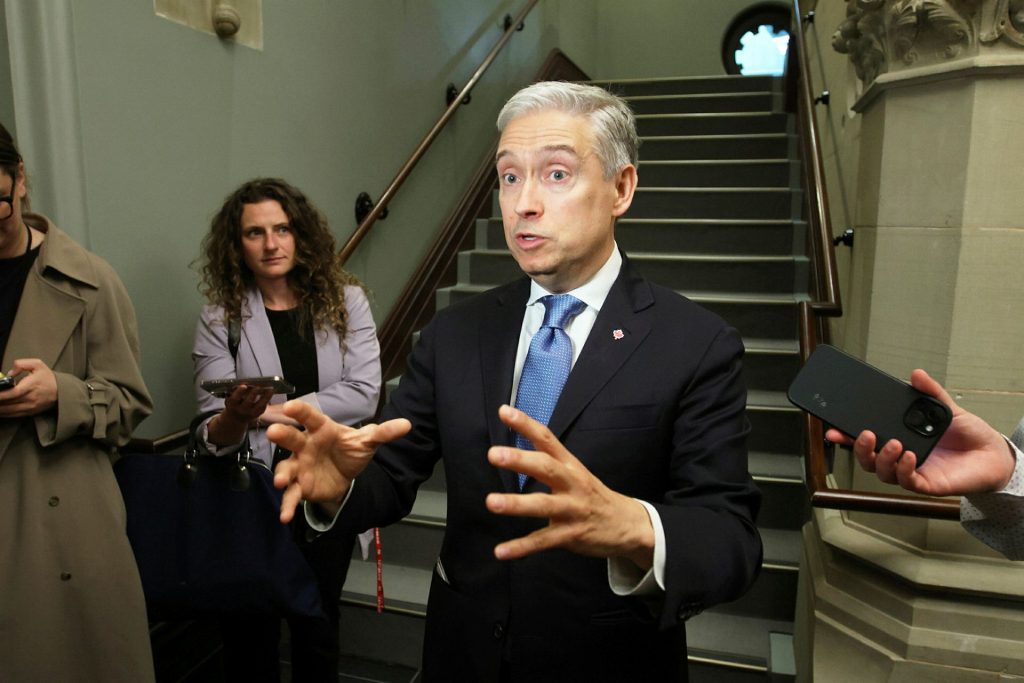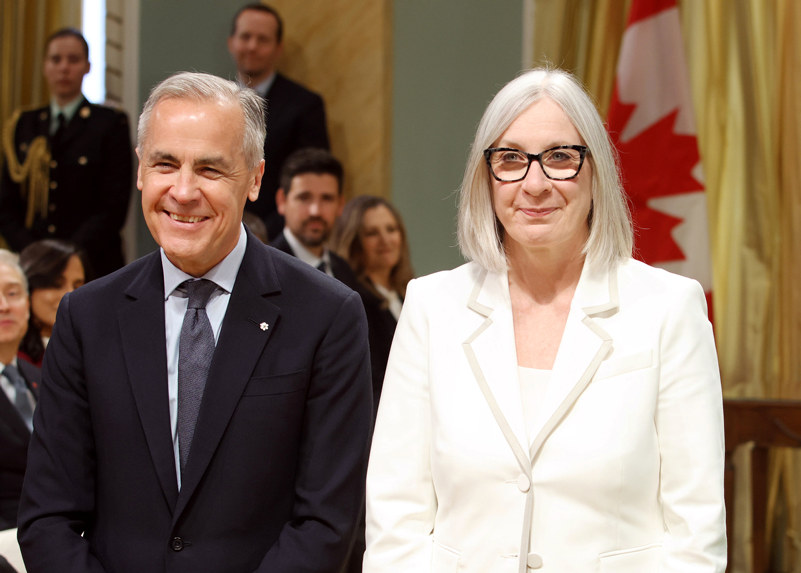Employment and Social Development Canada forecasts thousands of job losses ahead of Carney’s spending review

Thousands of job losses are forecast at Employment and Social Development Canada over the next three years, according to workforce requirements published in its latest departmental plan.
The report outlines plans to see ESDC’s workforce drop from 35,941 as of March 2025 to 29,234 by 2027-28, with a loss of 6,707 full-time equivalent positions, or slightly over 18 per cent.
ESDC is one of the largest departments in the public service, overseeing employment insurance, public pensions, family benefits, disability benefits, housing benefits, job training, workplace standards, temporary foreign worker programs, and more.
The 2025-26 plan breaks down the department’s roles into five core responsibilities: social development; pensions and benefits; learning, skills development and employment; working conditions and workplace relations; and information delivery and services for other departments.
Information delivery and services for other departments is expected to lose 2,613 jobs between 2024-25 and 2027-28, or over 50 per cent of jobs in that area.
Jobs focusing on social development programs are expected to be cut by 23 per cent by 2027-28, according to the department’s forecasts. The learning, skills development, and employment arm is expected to reduce its full-time equivalents by 2,365 roles, or 14.61 per cent of positions.
Each department is required to submit its employment needs for upcoming years as part of its departmental plan. The federal public service was first put on notice to find savings in Budget 2023, which outlined $15-billion in cuts to programs and services over the next four years. ESDC’s plan was published before Finance Minister François-Philippe Champagne (Saint-Maurice-Champlain, Que.) announced a sweeping spending review of all departments, telling his fellow cabinet ministers to find billions of dollars in savings. In the letter, sent out on July 7, Champagne said he intends to reduce program spending by 7.5 per cent for the 2026–27 fiscal year, by 10 per cent in the second year, and 15 per cent by 2028–29.
Prime Minister Mark Carney (Nepean, Ont.) pledged during the election to “cap, not cut” the public service, but has made clear he plans to cut billions of dollars in operational spending and is ready to discipline bureaucrats who fail to meet his high standards.

Following Champagne’s note, senior officials with ESDC sent their own letter to employees which said the spending review “reflects a focus on returning to core responsibilities and the need to balance fiscal discipline, quality service delivery for Canadians, and economic growth.”
Departments are tasked with bringing forward “ambitious savings proposals” the letter says, and will target programs and activities that are “underperforming, not core to the federal mandate, duplicative, or misaligned with government priorities.”
The review will result in proposals that align with balancing fiscal discipline, quality service delivery for Canadians and economic growth, and will “build upon the excellent work already underway in the portfolio to leverage innovation and harness AI and technology to achieve greater cost-effectiveness, better service for Canadians and support the government’s agenda across all our operations.”

The letter was signed by Paul Thompson, ESDC’s deputy minister; associate deputy ministers Cliff Groen, who is also Service Canada’s chief operating officer, and Sandra Hassan, who is also deputy minister of labour; Tina Namiesniowski, senior associate deputy minister of ESDC; and John Ostrander, business lead for benefit delivery modernization and information technology for the department.
“Given the scope of requested spending reductions, adjustments to our workforce may be necessary,” the letter says, but hedges “no decisions have been made, and it will be some time before the outcome of the review is known.”
The senior officials said the department’s proposals will prioritize minimizing impacts on staff, “by using all HR planning tools at our disposal and preserving our commitment to a diverse and representative workforce.”
The Hill Times asked the department which programs and projects will be impacted by cuts, and if job losses will occur in permanent positions, or part-time or term roles.
Maja Stefanovska, a media relations spokesperson, said the department will develop proposals that support the 15 per cent savings target by 2028-29.
“ESDC leadership has advised employees that the department will prioritize minimizing impacts on employees,” she said via email. “No decisions have been made and it will be some time before the outcome of the review is known.”
In response to the government’s spending review, the Public Service Alliance of Canada (PSAC) and Canadian Association of Professional Employees (CAPE)—two of the largest unions representing federal public servants—warned deep cuts will result in austerity measures that will hurt vital public services.

A July 8 statement from PSAC President Sharon DeSousa said more than 10,000 federal public service jobs were lost last year alone with no plans to maintain the services those workers provided.
“Thousands more cuts have already been announced—including at the Canada Revenue Agency and Employment and Social Development Canada—and nearly 2,000 PSAC members have already been given notice their jobs are at risk through workforce adjustment.”
CAPE similarly said cutting spending by 15 per cent in three years is a “reckless and irresponsible move” that will leave Canada more vulnerable.
“Despite repeated promises during the election campaign to cap the size of the federal public service, Prime Minister Carney is now betraying the millions of Canadians who voted for him by introducing drastic cuts that will jeopardize services that Canadians rely on,” CAPE president Nate Prier said in a statement.
In the plan, Jobs and Families Minister Patty Hajdu (Thunder Bay—Superior North, Ont.) who is responsible for ESDC, outlined “ambitious” government plans “to drive progress” in sectors including trade, energy solutions, housing affordability and security.

Her letter highlighted artificial intelligence as “transformative,” and said government would support Canadian workers and businesses to develop necessary skills for “an evolving labour market by ensuring timely access to the necessary education and training resources.”
Hajdu said ESDC is funding 22 projects to provide training for workers “affected” by artificial intelligence, and to “develop skills for jobs in the low-carbon economy in key sectors.”
She said ESDC is also spending close to $3-billion on training and employment services for 800,000 Canadians who are on employment insurance. The funding will assist with skills training, wage subsidies, and employment support, as well as counselling and job search assistance.
mglass@hilltimes.com
The Hill Times






 LICENSING
LICENSING PODCAST
PODCAST ALERTS
ALERTS













